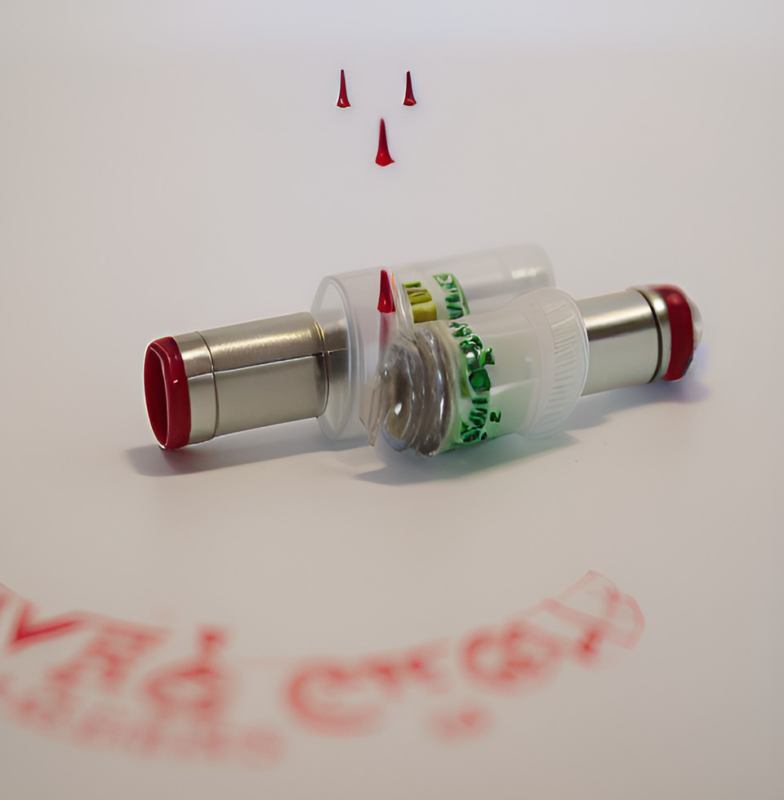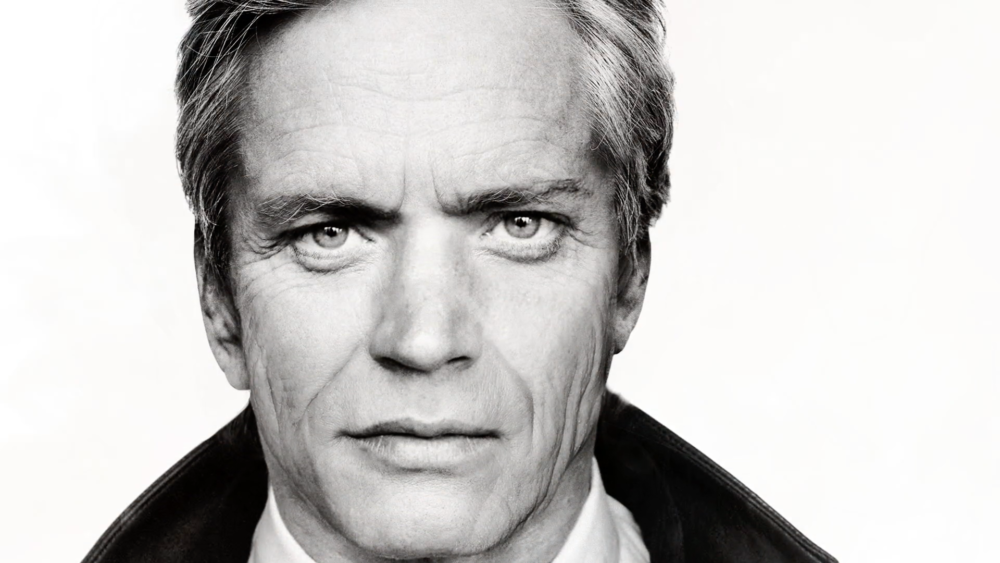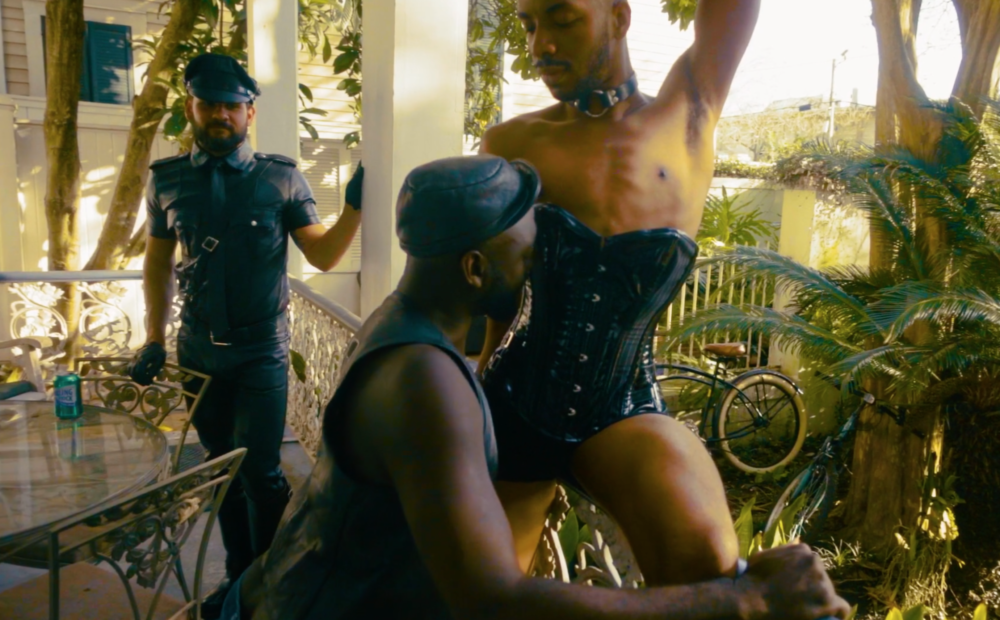Tannon Reckling interviews activist and filmmaker Leo Herrera, exploring the ways AI tools could be used in HIV and AIDS activism today and Herrera's incorporation of AI into his own work.



(What Good is This Tool?): Leo Herrera Interviewed by Tannon Reckling
TANNON RECKLING
As new image generators and chat bots have become publicly available over the last year, larger artificial intelligence has become the subject of much debate. These technologies have been primarily engaged as wealth spectacles in our attention economies, with little consideration of how these procedures could provide material care in relation to current and worsening intersectional issues. Through a recent pop culture lens, we can think of actress Indya Moore’s recent words: “We out here humanizing robots and dehumanizing trans folks.”
How might AI think about HIV and AIDS? How might AIDS activists and artists today use, hack, or remix these increasingly corporate tools? Over the last four decades, artists and activists within the AIDS movement used what is at hand to develop resistance and contemplation within precarious circumstances. In 1991, the Visual AIDS Artists' Caucus initiated the Red Ribbon Project, colloquially as the red ribbon, by using everyday material to create strong icons to activate HIV and AIDS visibility over decades.1 The working DIY values of early AIDS activists have continued into today with continued uses of new media forms. Through this lens: we should lean into experimenting with tools to survive and even thrive in new ways like our queer histories have shown is possible, and at times, frustratingly necessary.
AIDS activists groups and artists of the 1980s and 1990s used graphic design and other available commercial methods to respond to systemic silences, discriminations, or to activate public spheres. Artist Avram Finkelstein and others fighting for survival created the Silence=Death posters which went on to circulate with ACT UP and other activist groups. Canadian art collective General Idea and their AIDS (Wallpaper) logo based on the artist Robert Indiana’s well-known ‘LOVE’ icon which is now commercialized. We can think of differently contextualized “pink triangle” visuals and even Keith Haring's drawings which can be seen more and more in SoHo clothing stores: at times stripped of resistance and introduced into class and disenfranchised history tourism-artifacts despite well-meaning intentions. These sensibilities continued into emerging video and television mediums of the time. Gay Cable Network used public access cable to share information about HIV and AIDS to a wider public, and DIVA TV (Damned Interfering Video Activists) to use performance and video as both activism and testimony.2
These same networked sensibilities were around when the mass internet emerged in the 1990s; the internet is another type of network where HIV and AIDS cultural labor was, and still is, happening.3 Kiyoshi Kuromiya, founder of Critical Path AIDS Project in Philadelphia, PA, and the Critical Path newsletter, which went on to become one of the first functional websites on the internet, was asked by a judge in a 1996 Communications Decency Act hearing to explain “how the internet works.”4 HIV and AIDS cultural labor has always been intertwined with new media advances. This is relevant to current, hard to engage, AI discourses unfolding within larger infrastructures failures and challenges that affect us daily in pursuits towards wellness. These starting points for discussion of technology, an umbrella term, is often exhausting or potentially extractive5 like unrelenting ‘black-boxed’ technology structures.6 This produces similar feelings like facing massive histories, archives, and ongoing testimonies of HIV/AIDS around the globe, especially those importantly working and acknowledging that HIV/AIDs is not only a thing that “happened to white gay cis men in NYC during the 1980’s.”
A multidisciplinary artist utilizing network sensibilities today is Leo Herrera. His social media posts function as queer prayers, resource sharing, and humorous history lessons which open HIV and AIDS cultural labor into a new decade. Herrera's practice includes films, podcasts, performances, poetics, and more; his shifting online performance of @browngayjesus is influenced by artist Ray Navarro who also used performance for AIDS activism before his early death.7 Herrera has been using new media and AI procedures the past few years to construct various digital forms and creative projects that speak to queer issues and the impact of HIV and AIDS on cultural production over the past few decades.

One project is the ongoing series The Fathers Project (2020) which daringly, and at times darkly humorously, asks us to “imagine a world where AIDS never happened and our heroes lived. Who would they be? Who would we be?”8 The speculative essay film takes us through an alternate timeline where nostalgic utopian queer communities emerge and grow in political power in complicated ways that are attached to other systemic complications. The majority of the film uses an feminine AI-generated voice to dictate the events we are seeing montaged together through a type of voyeurism. The narrative ends up eerily mimicking contemporary systemic violence and oppression as logical outcomes of capitalism and white supremacy; this grounds the work in reality and supplements needed inter-leftist activism today when HIV and AIDS narratives are at times even tokenized in larger economic circulations for funding purposes or hollow corporate DEI purposes.9

In a recent making-of documentary for The Fathers Projects, Herrera describes an early childhood memory of being treated differently for being from an undocumented immigrant family. Herrera found escape in queer bookstores and developed kinship in the histories located in these places. This went on to influence his current creative practice of honoring those who labored, died, or survived before him: beyond a simplistic or easy queer label. In this documentary, Herrea also describes a cathartic process of taking historical photos of different folks found in these archival spaces and altering them. Some were unknown and some are famously queer. Herrera digitally ages the people in these photos using AI tools and then sits with the result and “imagines what the world would look like” in speculative worlds with these imaginary families, communities, and timelines.10
Herrera says about the film:
“There’s so many ghosts. I want all those who survived to look at the project, and see all the love that went into it.”
Metaphors of ‘ghosts in the machine’ have been around for decades; we should think of them as a needed introduction to the needed realistic outcomes of capitalist technology on flesh and the interconnected landscapes in which we need to survive: poetic or metaphorical engagement of unseen forces is understandable when digital processes work away from us in far off warehouses and inaccessible corporate offices which decide much of our lives. Herrera’s use of contemporary mediums and AI processes show us new framings of contentious technologies and their discourses.

Over time, HIV and AIDS cultural workers have used what was at hand to develop visuals and poetic forms from multiple resistances that continue to have staying power for us today. When thinking about large AI concepts, we need to ask who or what these visualizations, tools, processes, and their platforms are responsible to: scholars, localities, designers, the data, the money, or community narratives?11 We should also ask what affordances are present for changing the very problems we are specifically addressing through their use, disuse, or circulation.12 It may seem frivolous to make these connections, but HIV and AIDS cultural workers and technology activists share values of harm-reduction more than ever.13 This intersection is necessarily messy but offers wayfinding when a working, yet unseen, process is increasingly a shibboleth. Intersectional AIDS cultural workers, artists, and activists have used the tools around them to engage their present for decades. We should continue this legacy with a new frustrating, but beyond imminent, vernacular in which we are already living.
Interview
TR: What forms of HIV/AIDS history and artist activism do you find kinship with?
LH: One of the biggest lessons from the AIDS crisis was the power of the media in creating propaganda in multiple ways. I had the honor of working with Avram Finklestein a few years back on a “flash collective” with other artists (actually sponsored by Visual AIDS). Avram of course, co-created the iconic Silence=Death campaign and was part of Gran Fury (who are a huge influence on my social media work today).
TR: What are your thoughts on how AI tools could be used for HIV and AIDS activism today?
LH: I think there's natural hesitancy around it and many of the tools which will shape our daily lives are still in beta or being released. But there will be many tools that will be useful in a nonprofit and activist setting. Audio tools to make our podcasts or sounds better, video editing tools that allow you to edit a film by editing the transcript of text, there's even an AI tool which changes your eyes so that it looks like you are giving eye contact to the camera while you're reading notes! People expect a level of corporate slickness sometimes from nonprofits, that's one thing I learned working as a graphic designer and video editor. It makes folks feel comfortable donating for example. But many nonprofits can't afford to have an in-house video editor or even a designer. So these tools will be invaluable for, say a small nonprofit engaging a demographic category like Latina transwomen, to have slick websites and online presences which matter to funding models.
TR: How did you think through AI while working on The Fathers Project?
LH: The AI narrator in Fathers came about as a necessity at first. It was a basic but very realistic text to speech tool that is now common but was still a new tool in 2017. Because filming took place in actual events and gatherings, I had to be nimble with the script. To have written a script for a narrator to record would have been prohibitively expensive and not allowed me much flexibility. It feels relevant that I was able to change what the narrator said until the last possible second before I finished an episode. I had no money when filming The Fathers Project and having access to this sort of thing did help me make the film. It is weird to think about this sort of DIY use, but eye-opening for how we might use it ourselves.
TR: What were some audience reactions to AI methods in The Fathers Project?
LH: The narrator gives the film a real sci-fi feel. As soon as she starts talking, you know you're in a futuristic world. Some folks felt it was a bit too impersonal but that was the point. Most people really liked how soothing it was. This complexity resembles how AI arguments are being played out in real time. Complex arguments are better to me than straight up ignoring problems.
TR: Do you find inspiration in AI uses from other creatives today?
LH: I’m a huge admirer of how art and design created such stunning activism tools. With social media being such a live medium that requires constant feeding of the algorithm, AI can provide tools to feed that beast without breaking the bank in creative ways. We forget it can be useful for those of us working many hours a week and just trying to get through the day. I understand there are many concerns and discussions on what effects AI will have on jobs and the creative pipeline but there’s also many, many exciting developments that may streamline these processes. I am working on some projects that address these complex stakes. Queer people are incredible at adapting to new technologies and using them for communication and for harm reduction, and more, especially within ongoing HIV/AIDS work.
Bios
Leo Herrera (he/him) is a Mexican activist/filmmaker and writer known for queer viral art films and short documentaries that tackle issues of queer politics, sex, HIV stigma and history. He travels across America to document instances of queer utopia, which are the basis of The Fathers Project. @herreraimages
Tannon Reckling (they/he) is transdisciplinary arts laborer. They have attended University of Oregon; University of California- Los Angeles; New York University; they have been at Bemis Center for Contemporary Arts, Los Angeles Contemporary Exhibitions; Whitney Museum of American Art; and more. Their work follows: messy queer ontologies, nuanced technology, HIV/AIDS histories, and cultural shadow labor. @foreclosedgaybar — Thank you Peter Fankhauser; J. Konieczny; T. Eichenberger for editing.
Works cited
- https://visualaids.org/projects/the-red-ribbon-project
- https://actupny.org/divatv.1.html
- Ted Kerr’s Meme Writing: https://visualaids.org/blog/update-before-there-were-coporate-produced-memes
- McKinney, Cait. “CRISIS INFRASTRUCTURES: AIDS ACTIVISM MEETS INTERNET REGULATION.” AIDS and the Distribution of Crises. Edited by Jih-Fei Cheng, Alexandra Juhasz, Nishant Shahani, Duke University Press, 2020, pp. 162–82.
- Ivy Kwan Acre & Julie Tolentino’s 2022 work: https://whitney.org/events/activism-for-global-pandemic-equity
- Benjamin, Ruha. “Race after Technology: Abolitionist Tools for the New Jim Code.” Polity, 2019.
- M. Petro, Anthony. “Ray Navarro’s Jesus Camp, AIDS Activist Video, and the New Anti-Catholicism.” Journal of the American Academy of Religion, Volume 85, Issue 4. 2017.
- https://www.iftheylived.org/
- Táíwò, Olúfẹ́mi O. “Elite Capture: How the Powerful Took Over Identity Politics (And Everything Else).” Haymarket Books. 2022.
- Ctd. https://www.iftheylived.org/
- Paglen, Trevor. “Excavating AI: The Politics of Images in Machine Learning Training Sets.” https://excavating.ai/
- Verhoeven, D. “Visualising data in digital cinema studies: more than just going through the motions?” Alphaville: Journal of Film and Screen Media, 11, 2016. pp. 92–104
- Referencing histories of coalition building, in-fighting, gathering; Schulman, Sarah. "Let the Record Show: A Political History of Act UP New York, 1987-1993.” New York: Picador/Farrar, Straus and Giroux, 2022.